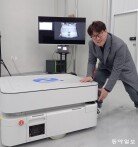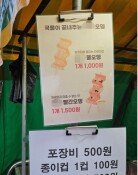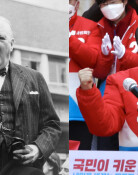Pres. Yoon blames resistance while failing to deliver reform
Pres. Yoon blames resistance while failing to deliver reform
Posted September. 19, 2024 08:32,
Updated September. 19, 2024 08:32

“Reform always encounters resistance. Indeed, anti-reform movements are ongoing everywhere,” President Yoon Suk Yeol declared on Friday at the Inaugural Ceremony of the Third Committee for National Integration and Performance Evaluation. “The four major reforms—pensions, healthcare, education, and labor—are not for the government’s bragging rights, but are aimed at addressing the deep-rooted structural challenges in our society,” he added. “Cartels work in tandem to block reform, but we will not be deterred.”
Yet President Yoon’s statements may have left many puzzled. Despite setting pension, education, and labor reform as central to his administration’s agenda, halfway through his term, not a single substantial achievement has been made. Pension reform has barely scratched the surface, with the only outcome being a modest 16-year extension before the pension fund runs dry—hardly a victory, and even this came after the government interfered with a bipartisan agreement in the National Assembly. Labor reform remains stagnant, paralyzed after public outcry over a proposal to extend the workweek to 69 hours. Education reform has focused more on tackling the “private education cartel” rather than addressing the structural issues plaguing public education. To speak of resistance to reform is perplexing when little reform is underway.
The only reform that gained traction was healthcare, and President Yoon’s reference to an “anti-reform cartel” likely targeted the medical community, particularly doctors who were resisting his healthcare policies. The healthcare crisis is indeed worsening; trainee doctors have resigned en masse in protest of the government’s plan to increase medical school admissions by 2,000 slots. However, dismissing this opposition as mere obstructionism overlooks a key point: past administrations have recognized that genuine healthcare reform requires addressing the reimbursement of the deficit from high costs of essential services and the concentration of patients in the country’s “Big 5” hospitals. Instead of tackling these foundational issues, the Yoon administration abruptly proposed expanding medical school quotas, sidestepping the thornier financial and political questions that have long needed attention. Had the administration pursued a more measured approach, first addressing these deeper issues, the backlash from the medical community might not have been so prolonged.
While the government insists there were no major emergencies over the recent Chuseok holiday, troubling incidents have surfaced, including the case of a pregnant woman in labor who was turned away by 75 hospitals. By 2025, when the expected influx of new doctors won’t materialize, the cracks in the healthcare system will only widen, and the consequences will be far more severe. Although the administration is now attempting to form a four-party consultative body, including the ruling party, opposition, doctors, and the government, any breakthrough seems distant as long as President Yoon remains committed to his stance that an expansion of 2,000 medical school slots is the “bare minimum” based on scientific data. With healthcare reform mired in crisis, it’s difficult to see how the government can pivot to the remaining three reforms.
Headline News
- Joint investigation headquarters asks Yoon to appear at the investigation office
- KDIC colonel: Cable ties and hoods to control NEC staff were prepared
- Results of real estate development diverged by accessibility to Gangnam
- New budget proposal reflecting Trump’s demand rejected
- Son Heung-min scores winning corner kick







